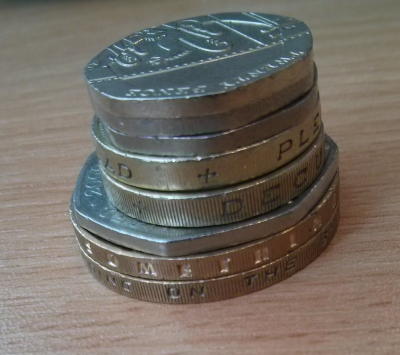Positive and Negative Numbers (Psychology)
Introduction
Positive numbers are those which are greater than zero. Negative numbers are those which are less than zero. Below is a table to help you remember what to do with the sign when using multiplication or division and addition or subtraction.
\begin{array}{ccccc} \text{Positive} & \times / \div & \text{Positive} & = & \text{Positive} \\ \text{Negative} & \times / \div & \text{Negative} & = & \text{Positive} \\ \text{Positive} & \times / \div & \text{Negative} & = & \text{Negative} \\ \text{Negative} & \times / \div & \text{Positive} & = & \text{Negative} \\ \end{array}
\begin{array}{ccccc} + (-\text{Number}) &= -\text{Number} \\ - (+\text{Number}) &= -\text{Number} \\ + (+\text{Number}) &= +\text{Number} \\ - (-\text{Number}) &= +\text{Number} \\ \end{array}
For more information see positive and negative numbers in our Numeracy section.
Worked Examples
First we have a worked example on adding and subtracting negative numbers.
Worked Example
At the beginning of the year, you opened your own surgery. You have $\large\unicode{xA3}\normalsize 20,\!000$ left to spend. As with most newly established enterprises, you are making losses in the initial months. In January you made a loss of $\large\unicode{xA3}\normalsize4,\!500$, in February you lost three times as much as in January and in March you made a loss of half as much as in February. During this time you obtained three grants each of $\large\unicode{xA3}\normalsize1,\!000$.
Are you in your overdraft by the end of March? If so, by how much? If not, how much do you have left to spend?
Solution
Firstly calculate how much of a loss you made in February and March:

In February: you lost three times as much as in January : $\large\unicode{xA3}\normalsize 4,\!500 \times 3 =\large\unicode{xA3}\normalsize 13,\!500$
' In March:' you lost half as much as in February: $\large\unicode{xA3}\normalsize13,\!500 \div 2=\large\unicode{xA3}\normalsize6,\!750$
Your losses in this period are: $\large\unicode{xA3}\normalsize4,\!500+ \large\unicode{xA3}\normalsize13,\!500+ \large\unicode{xA3}\normalsize6,\!750 = \large\unicode{xA3}\normalsize 24,\!750$. But you get three grants totalling: $\large\unicode{xA3}\normalsize1,\!000 \times 3 = \large\unicode{xA3}\normalsize3,\!000$. Hence you have: $\large\unicode{xA3}\normalsize20,\!000 + \large\unicode{xA3}\normalsize3,\!000 + (- \large\unicode{xA3}\normalsize24,\!750) = - \large\unicode{xA3}\normalsize1,\!750$ left at the end of March. So you are in your overdraft by $\large\unicode{xA3}\normalsize1,\!750$ by the end of March.
We now have a second example on multiplying/dividing by negative numbers.
Worked Example
The receptionist has a water dispenser on the desk to allow people waiting to have a drink while they wait.
The tank currently has $2500$ml in it. The receptionist knows that $500$ml is drunk every day.
a) How full was the tank $4$ days ago?
b) You are currently in a heat wave and twice as much water is being drunk. Will there be enough water in the dispenser for $3$ more days?
Solution
a)
We know that the amount of water in the dispenser changes by $-500$ml each day. To calculate the amount in the tank we subtract this amount $4$ times, (to go back $4$ days).
So the over all change is: $-4\times -500=2000$ml.
Therefore $4$ days ago there was: $2500+2000=4500$ml in the tank.
b)
The amount of water used each day has now doubled. So the overall change each day is $-1000$ml.
In $3$ days time we can calculate there will be: $2500 - 3\times 1000 = -500$ml in the tank.
Therefore there is not enough water in the dispenser to last $3$ more days as the number is negative.
Test Yourself
Try our Numbas tests on background mathematics.
External Resources
- Adding and subtracting negatives from Maths is Fun.
- Multiplying by negatives from Maths is Fun.